Augusta Stylianou Gallery

<-----===========------->
Loading
|
Paintings
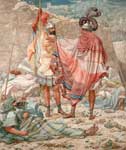
Mercy. David Spareth Saul's Life
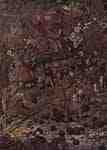
The Fairy-Feller's Master-Stroke ,
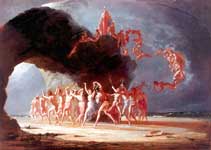
Come unto These Yellow Sands
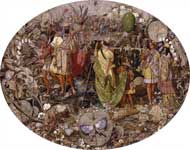
Contradiction: Oberon and Titania
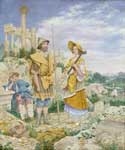
Wandering Musicians
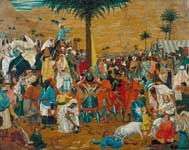
The Flight out of Egypt
Buy Fine Art Prints | Greeting Cards | iPhone Cases
Richard Dadd (1 August 1817 – 7 January 1886) was an English painter of the Victorian era, noted for his depictions of fairies and other supernatural subjects, Orientalist scenes, and enigmatic genre scenes, rendered with obsessively minuscule detail. Most of the works for which he is best known were created while he was incarcerated in a psychiatric hospital.
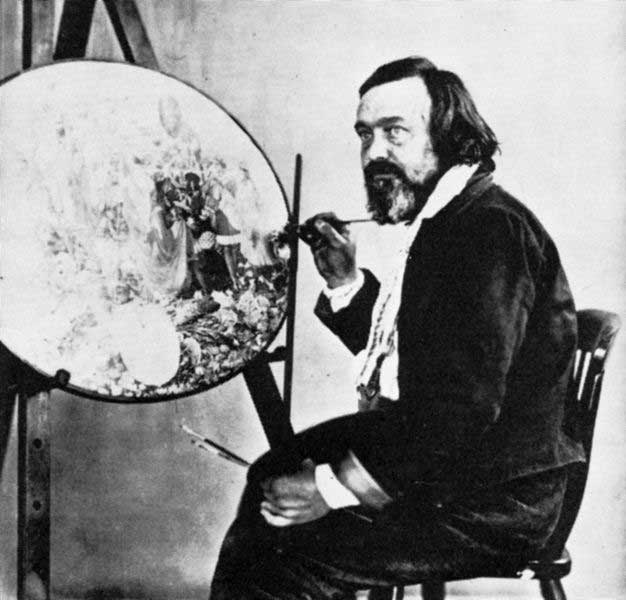
Richard Dadd. The painting he is working on is Contradiction: Oberon and Titania (1854/1858).
Life and work
Dadd was born at Chatham, Kent, England, the son of a chemist. His aptitude for drawing was evident at an early age, leading to his admission to the Royal Academy of Arts at the age of 20. With William Powell Frith, Augustus Egg, Henry O'Neil and others, he founded The Clique, of which he was generally considered the leading talent.[1]
In July 1842, Sir Thomas Phillips, the former mayor of Newport, chose Dadd to accompany him as his draftsman on an expedition through Europe to Greece, Turkey, Southern Syria and finally Egypt. In November of that year they spent a gruelling two weeks in Southern Syria, passing from Jerusalem to Jordan and returning across the Engaddi wilderness. Toward the end of December, while travelling up the Nile by boat, Dadd underwent a dramatic personality change, becoming delusional and increasingly violent, and believing himself to be under the influence of the Egyptian god Osiris. His condition was initially thought to be sunstroke.[2]
On his return in the spring of 1843, he was diagnosed to be of unsound mind and was taken by his family to recuperate in the countryside village of Cobham, Kent. In August of that year, having become convinced that his father was the Devil in disguise, Dadd killed him with a knife and fled for France.[3] En route to Paris Dadd attempted to kill another tourist with a razor, but was overpowered and was arrested by the police. Dadd confessed to the killing of his father and was returned to England, where he was committed to the criminal department of Bethlem psychiatric hospital (also known as Bedlam). Here and subsequently at the newly created Broadmoor Hospital, Dadd was cared for (and encouraged to continue painting) by the likes of Drs William Wood and Sir W. Charles Hood, in an enlightened manner.
Dadd probably suffered from a form of paranoid schizophrenia.[4] He appears to have been genetically predisposed to mental illness; two of his siblings were similarly afflicted, while a third had "a private attendant" for unknown reasons.[2]
The Fairy Feller's Master-Stroke by Richard Dadd, oil on canvas, 26 inches x 21 inches, 1855-64, Tate Gallery, London, England, UK
In the hospital he was allowed to continue to paint and it was here that many of his masterpieces were created, including his most celebrated painting, The Fairy Feller's Master-Stroke, which he worked on between 1855 and 1864. Also dating from the 1850s are the thirty-three watercolour drawings titled Sketches to Illustrate the Passions, which include Grief or Sorrow, Love, and Jealousy, as well as Agony-Raving Madness and Murder. Like most of his works these are executed on a small scale and feature protagonists whose eyes are fixed in a peculiar, unfocused stare. Dadd also produced many shipping scenes and landscapes during his incarceration, such as the ethereal 1861 watercolour Port Stragglin. These are executed with a miniaturist's eye for detail which belie the fact that they are products of imagination and memory.[5]
After 20 years at Bethlem, Dadd was moved to the criminal lunatic asylum at Broadmoor, outside London. Here he remained, painting constantly and receiving infrequent visitors until 7 January 1886, when he died, "from an extensive disease of the lungs."[6]
Legacy
* The Fairy Feller's Master-Stroke inspired a song of the same name by the British rock band Queen. The painting also is a plot element in The Witches of Chiswick by Robert Rankin. The Wee Free Men, a novel by Terry Pratchett, edited in 2003, was in a central part inspired by it as well.
* The British fantasy writer Angela Carter wrote Come unto these Yellow Sands, a radio-play based on Dadd's life.
* The British composer Oliver Knussen considered naming his piece Flourish with Fireworks after The Fairy Feller's Master-Stroke, as its composition owes a lot to the small, exquisite, quirky details in the painting and contains a similar attempted correlation of large and small scale.
* Canadian author R.J. Anderson acknowledges Dadd as the basis of her fictional painter Alfred Wrenfield, who figures prominently in her young adult fantasy novel Knife (Faery Rebels: Spell Hunter in the USA).[7]
In 1987 a long-lost watercolour by Dadd, The Artist's Halt in the Desert, was discovered by Peter Nahum on the BBC TV programme Antiques Roadshow. Made while the artist was incarcerated, it is based on sketches made during his tour of the Middle East, and shows his party encamped by the Dead Sea, with Dadd at the far right.[8] It was later sold for £100,000 to the British Museum.
Notes
1. ^ Allderidge, 1974, Richard Dadd, p. 13.
2. ^ a b Allderidge, 1974, Richard Dadd, p. 22.
3. ^ Allderidge, 1974, Richard Dadd, p. 24.
4. ^ The Victorians part 4. Dreams and Nightmares BBC One, 8th March 2009
5. ^ Allderidge, 1974, Richard Dadd, pp. 31–33.
6. ^ Greysmith, 1973, p. 73.
7. ^ McNeil, Gretchen (2009, June 10). [Interview with R.J. Anderson]. The Enchanted Inkpot. Retrieved December 1, 2009, from web site: http://community.livejournal.com/enchantedinkpot/15627.html
8. ^ (http://www.leicestergalleries.com/art-and-antiques/detail/11795)
References
* Allderidge, Patricia (1974). Richard Dadd. New York and London: St. Martin's Press/Academy Editions.
* Allderidge, Patricia (1974). The Late Richard Dadd 1817-1886. London: The Tate Gallery.
* Chaney, Edward (2006). 'Egypt in England and America: The Cultural Memorials of Religion, Royalty and Religion', Sites of Exchange: European Crossroads and Faultines, eds. M. Ascari and A. Corrado. Amsterdam and New York: Rodopi.
* Greysmith, David (1973). Richard Dadd: The Rock and Castle of Seclusion. New York: Macmillan Publishing Co., Inc.
* Marc Demarest (2007-05-24). "The Richard Dadd Page". http://www.noumenal.com/marc/dadd/.

